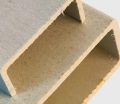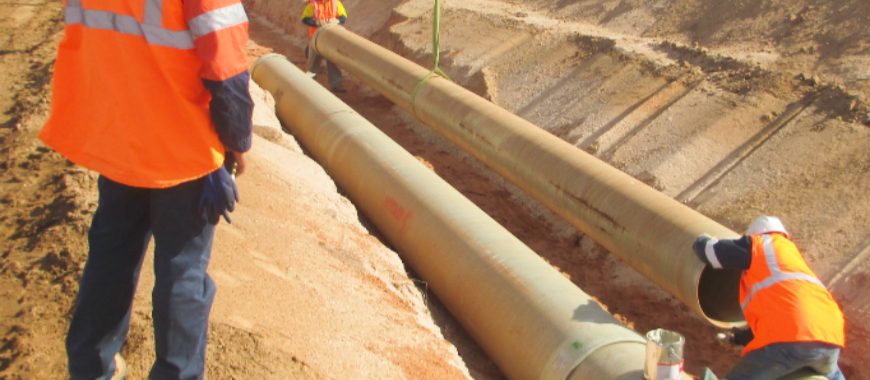
FRP pipe density data (kg/m³), thermal properties & strength specs. Lightweight (1/6 steel weight), compliant with DIN 16965 standards. FRP pipe density refers to the mass per unit volume of Fiberglass Reinforced Polymer pipes, typically measured in kilograms per cubic meter (kg/m³). FRP pipe density plays a crucial role in determining the performance, durability, and overall efficiency of piping systems used across industries such as chemical processing, wastewater treatment, and construction. The density of FRP pipe affects their strength-to-weight ratio, influencing how they withstand pressure, corrosion, and mechanical stress. Properly assessing frp pipe density ensures that the selected piping system is both lightweight and robust, offering long-lasting performance with minimal maintenance. In various industrial applications, understanding and optimizing frp pipe density is essential to meeting safety, cost-effectiveness, and operational demands.
Simplifying Your Life: Key Functionalities
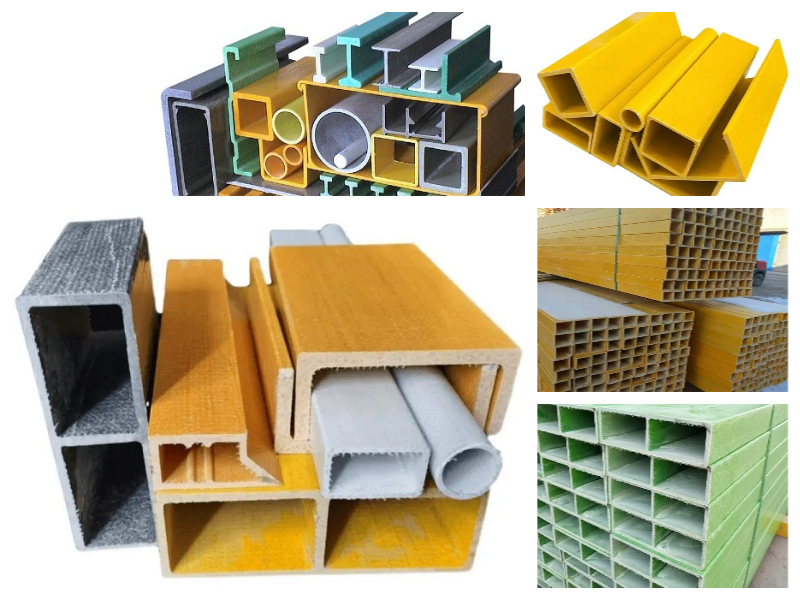
| Attributes | Details |
|---|---|
| Place of Origin | Hebei, China |
| Brand Name | GangLong Fiberglass |
| Technology | Pultrusion |
| Surface Treatment | Sandblasting/Smooth/Matte/Paint or Customized |
| Processing Services | Welding, Cutting, Bending, Punching, |
| Product Name | FRP Pipe |
| Shape | Customized Shape |
| Size | Customized Size |
| Thickness | Customized Thickness |
| Color | Customized Color |
| Diameter | Customized Diameter |
| Length | Customized Length |
| Material | Fiberglass Reinforced Plastic / Unsaturated Polyester |
| Features | High Strength |
| Type | Fiberglass Reinforced Polymer |
| Advantages | Flexible Anti-corrosion, Fireproof |
| Service | Support Online Technical Service |
| Quality | High Quality |
| Application | Transportation, Electricity, Energy, Industry and Agriculture |
What is FRP Pipe Density?
FRP pipe density, measured in kg/m³, is crucial for determining the strength, durability, and suitability of the pipe for different applications. It reflects the weight of the pipe material relative to its volume and varies based on the fiberglass and resin content. Higher-density pipes are stronger but heavier, offering better durability for demanding environments, while lower-density pipes are lighter and easier to install but may lack the same strength. The manufacturing process, including layering and curing methods, also impacts the pipe’s density, affecting its overall performance in structural, chemical, and environmental conditions.
How about the Composition of FRP Pipe Density?
The composition of FRP pipes significantly impacts their density. Made from a combination of glass fibers and resin, the ratio of these materials determines the pipe’s overall density. Glass fibers provide strength, while resin offers resistance to chemicals, corrosion, and extreme temperatures. Higher glass fiber content increases density and strength but can also make the pipe heavier. GangLong Fiberglass pipes optimize density for various applications, ensuring both strength and lightweight properties, and maintaining uniform density for enhanced performance in demanding environments.
The Effect of Dimensions on FRP Pipe Density
FRP pipe density is also influenced by the dimensions of the pipe. The diameter and wall thickness of the pipe have a direct relationship with the overall density. For instance, thick wall fiberglass tube designs provide increased strength and durability, which can significantly enhance the density and performance of the pipe in demanding applications. A larger diameter or thicker walls increase the amount of material used in the pipe, resulting in a higher density.
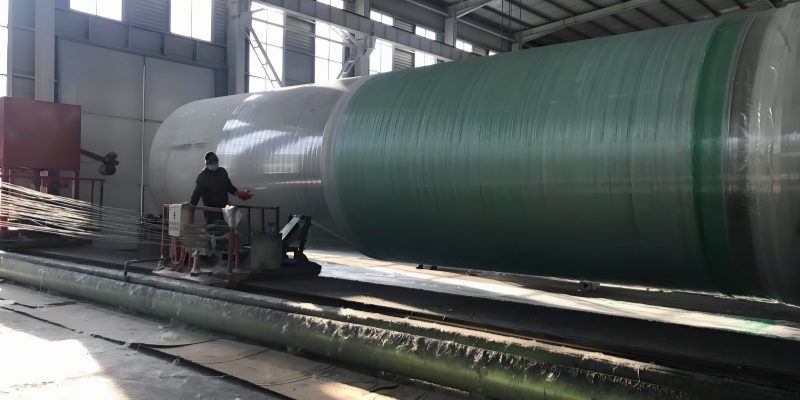
Characteristics of the FRP Pipe
FRP (Fiberglass Reinforced Plastic) pipes are widely recognized for their exceptional performance, making them an ideal choice for various industrial applications. These pipes combine the strength of fiberglass reinforcement with the flexibility of resin, resulting in a high-performance material suitable for diverse environments. The key characteristics of FRP pipes are their lightweight nature, corrosion resistance, strength, durability, and fiberglass reinforced polyester FRP pipe density, which all contribute to their extensive use in industries like chemical processing, water treatment, and oil and gas. The density of FRP pipes plays a crucial role in their performance, affecting both their strength-to-weight ratio and their suitability for different applications.
Lightweight and High Strength
One of the standout features of FRP pipes is their lightweight design, with a relative density ranging from 1.5 to 2.0, which is only about 1/4 to 1/5 of the weight of carbon steel. Despite their lighter weight, FRP pipes boast tensile strengths comparable to or even exceeding that of carbon steel, with specific strengths comparable to advanced alloy steel. This makes them ideal for applications that require reduced weight, such as in aerospace, rockets, spacecraft, and high-pressure vessels. FRP pipes can endure extreme pressures while maintaining strength, which is crucial in these high-performance industries.
Corrosion Resistance
FRP pipes are highly resistant to corrosion, which makes them perfect for environments exposed to chemicals, acids, alkalis, salts, and a wide variety of solvents. This corrosion resistance is particularly valuable in industries like chemical processing, wastewater treatment, and the oil and gas sectors. FRP pipes can replace traditional materials such as carbon steel, stainless steel, and wood, as they do not degrade in corrosive environments. Their resistance to rust and chemical corrosion significantly reduces the need for frequent repairs and replacements, extending the lifespan of piping systems and lowering maintenance costs.
Electrical Properties
In addition to their mechanical and chemical properties, FRP pipes also offer excellent electrical insulation. The material is a superior dielectric, which makes it an ideal choice for electrical applications. FRP pipes can withstand high-frequency voltages and maintain low electrical conductivity, ensuring they can be safely used in environments requiring electrical isolation. The material is widely used in the manufacturing of electrical insulators and radar antenna covers due to its effective microwave transmission capabilities. These properties add an extra layer of versatility, making FRP pipes suitable for high-tech applications.
Thermal Performance
The thermal properties of FRP pipes make them exceptional for use in environments with extreme temperature variations. With low thermal conductivity, FRP pipes serve as excellent insulating materials. At room temperature, their thermal conductivity ranges between 1.25 to 1.67 kJ/(m·h·K), significantly lower than metals like steel. This makes them ideal for use in high-temperature applications, where traditional metals might fail. In cases of ultra-high temperatures, such as protecting spacecraft from high-speed airflow over 2000°C, FRP pipes act as an excellent thermal protection material. They can effectively withstand extreme temperatures, offering both insulation and ablation resistance, which are critical in aerospace and other high-temperature industries.
Design Flexibility
FRP pipes offer exceptional design flexibility, which is one of the key advantages of using this material. The structural properties of FRP pipes can be customized to meet specific performance requirements, including corrosion resistance, high-temperature resistance, strength, and dielectric properties. The flexibility to adjust the material’s composition makes it possible to design FRP pipes for specialized applications, such as high-strength, lightweight products or those with enhanced chemical and temperature resistance. This versatility allows engineers to create piping systems that are perfectly suited to the needs of various industrial sectors.
Excellent Workmanship
The manufacturing process of FRP pipes is another factor that sets them apart from other materials. The flexibility of the molding process allows for the creation of products with complex shapes, tailored to meet specific technical requirements. The molding process is simple, which helps reduce production costs while maintaining high standards of quality. FRP pipes can be molded in one go, even for difficult-to-mold complex shapes. This ability to create custom designs makes FRP pipes highly adaptable for various industries, including those that require specialized piping solutions.
Benefits of using frp pipe insulation in heating and cooling systems
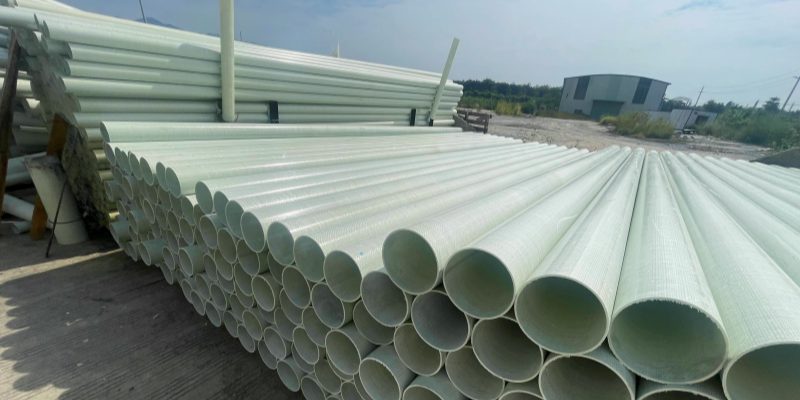
Applications Based on FRP Pipe Density
The frp pipe density plays a crucial role in determining their suitability for various applications. It influences the pipes’ strength, durability, and resistance to environmental factors. Different applications require varying levels of fiberglass reinforcement and pipe density to meet specific environmental demands. Below are common applications of FRP pipes based on their density:
Chemical Processing Industry
High-density FRP pipes are preferred in the chemical processing industry due to their enhanced resistance to acids, alkalis, and solvents. For example, China CPVC FRP pipe, known for their chemical resistance and structural integrity, are frequently used in acid treatment and chemical manufacturing processes. Their reliable performance ensures safe operation, minimizing the risk of corrosion-related failures in corrosive environments.
Wastewater Treatment
In wastewater treatment plants, medium to high-density FRP pipes are commonly used to withstand highly corrosive environments. The corrosion resistance of these pipes ensures a long service life, reducing the need for frequent replacements and lowering maintenance costs. Their durability makes them a cost-effective solution for industries dealing with aggressive wastewater.
Oil and Gas Industry
The oil and gas industry, both offshore and onshore, relies on high-density FRP pipes for transporting oil, gas, and other fluids. These pipes offer excellent resistance to corrosion from chemicals and saltwater, which makes them ideal for use in harsh environments. The high density of the FRP pipes contributes to their ability to perform in extreme conditions, ensuring long-term, reliable service in oil rigs and pipelines.
Marine Applications
High-density FRP pipes are essential in marine applications, such as shipbuilding and offshore platforms. The dense structure of these pipes provides outstanding resistance to seawater corrosion, making them perfect for environments exposed to saltwater and harsh weather conditions. Their durability ensures the longevity of marine systems, reducing the risk of degradation from environmental exposure.
Agriculture and Irrigation
For agricultural irrigation systems, low to medium-density FRP pipes offer a balance of strength and cost-effectiveness. These pipes are resistant to UV degradation and can handle fluctuating water pressures typical in agricultural applications. Their durability and flexibility make them suitable for systems that require consistent performance in varying environmental conditions.
Mining
Medium-density FRP pipes are commonly used in the mining industry for transporting slurry and other abrasive materials. The high-strength and corrosion-resistant properties of these pipes make them ideal for carrying abrasive substances in mining operations. These pipes are designed to withstand the challenging conditions of mining, ensuring reliable performance and minimal wear.
Benefits of Optimized FRP Pipe Density
Optimizing the density of FRP pipes offers several key advantages, making them an ideal choice for a wide range of industrial applications. The correct density improves the pipe’s structural integrity, enhances its performance, reduces maintenance requirements, and increases its overall longevity. The customized density of FRP pipes ensures that each system is tailored to meet the specific needs of the application, providing a high level of efficiency and reliability.
Improved Strength-to-Weight Ratio
Optimizing the frp pipe density enhances their strength-to-weight ratio, which is crucial for their performance. With the right density, FRP pipes maintain a robust mechanical strength while keeping the weight manageable. This allows for easier handling, transportation, and installation without compromising the pipe’s durability or reliability. The combination of high strength and low weight is especially valuable in industries where both durability and efficiency are essential, such as in construction projects and marine environments, where ease of installation is a priority.
Enhanced Corrosion Resistance
FRP pipes with optimized density are typically engineered to maximize their corrosion-resistant properties. The right balance of resin and fiberglass reinforcement ensures that these pipes can resist degradation from a wide variety of environmental factors, such as chemicals, moisture, and UV exposure. This makes FRP pipes particularly suitable for industries like chemical processing, wastewater treatment, and marine environments, where pipes are constantly exposed to harsh conditions. Their exceptional corrosion resistance ensures a longer service life, reducing the need for frequent replacements and lowering maintenance costs over time.
Reduced Installation and Transportation Costs
One of the significant advantages of optimized FRP pipe density is its lightweight nature, which reduces both transportation and installation costs. The reduction in weight lowers handling costs and allows for more efficient shipping, especially in large-scale projects. For complex installations, such as those in remote areas or locations with limited access, the lighter weight of FRP pipes simplifies the installation process. The savings in labor, machinery, and transportation contribute to the overall cost-effectiveness of FRP piping systems, making them an excellent choice for projects with budget constraints.
Increased Flexibility and Versatility
Optimizing FRP pipe density also enhances the pipe’s flexibility, making it an ideal material for applications requiring adaptability. With the right balance of flexibility and strength, FRP pipes can be easily molded to fit complex or curved paths without losing their structural integrity. This makes them particularly suitable for installations in tight spaces or areas with intricate layout requirements. The increased flexibility also ensures that FRP pipes can withstand external forces like vibration or seismic movement without cracking or breaking, offering a reliable solution for challenging environments.
Better Pressure Resistance
Optimized FRP pipe density significantly improves the pressure resistance of the pipes. By adjusting the density, manufacturers can create pipes that perform well under both high and low-pressure conditions, offering superior pressure resistance compared to other piping materials. The combination of resin and reinforcement fibers is engineered to withstand internal fluid pressures, making FRP pipes particularly valuable in industries such as oil and gas, power generation, and water treatment, where pipes must endure fluctuating pressure levels without compromising performance.
Reduced Environmental Impact
The optimized density of FRP pipes helps reduce their environmental impact. By adjusting the composition of the resin and fibers, manufacturers can minimize the use of raw materials while still achieving the required strength and durability. Additionally, FRP pipes can be produced using recycled materials, further reducing the carbon footprint of their production. This makes them a more sustainable option compared to traditional materials like steel or concrete. Using eco-friendly resins and manufacturing processes can also help industries meet sustainability goals while maintaining high-quality standards.
Cost-Effective Long-Term Solution
Although the initial cost of optimized FRP pipes may be slightly higher than conventional materials, their long-term cost benefits outweigh the upfront investment. The durable nature of FRP pipes reduces the need for regular maintenance and replacements, as they are resistant to corrosion, UV degradation, and physical wear. The pipes also eliminate the need for additional anti-corrosion treatments, which further reduces operational costs. Over their long service life, FRP pipes offer significant savings, making them a cost-effective solution for industries looking to minimize long-term expenditures.
Key to ensure successful frp pipe procurement process
Applicable Standards Guide for FRP Pipe
When designing and manufacturing FRP pipes, adherence to specific standards ensures they meet performance, safety, and durability criteria. A critical factor in this design process is FRP pipe density, which influences the strength, weight, and overall performance of the pipe. These standards guide the design, testing, and installation of FRP pipes, ensuring reliability and safety in industrial applications. This guide covers key specifications and regulations for FRP pipes, helping manufacturers comply with industry norms to guarantee their pipes perform efficiently and safely across various sectors.
DIN 16 965 Compliance
DIN 16 965 outlines the requirements for fiberglass reinforced plastic pipes, type D, PN 10. A key consideration in compliance is pipe density, set at 1.8 g/cm³, which influences the pipe’s strength, weight, and structural integrity. The density plays a significant role in determining burst pressure and load-bearing capacity, ensuring the pipe can handle harsh environments and perform reliably under operating temperatures up to 104°C (220°F).
BS 6464
BS 6464 specifies the requirements for reinforced plastic pipes, fittings, and joints used in process plants. This standard ensures that FRP pipes can endure high pressures, chemical exposure, and extreme temperatures. Following BS 6464 ensures that FRP pipes are designed with the necessary mechanical properties for demanding environments, making them suitable for use in industries like chemical processing and power generation, where reliability is critical.
41-GP-22
The 41-GP-22 specification governs reinforced polyester process equipment, including FRP pipes, in Canada. This standard provides design and testing guidelines to ensure the pipes can withstand high pressures, chemicals, and harsh temperatures. Following 41-GP-22 ensures that FRP pipes meet the durability and safety standards required in industries such as oil and gas, petrochemical, and heavy manufacturing.
ASTM D2996
ASTM D2996 provides the standard specification for filament-wound fiberglass pipes, commonly used for industrial applications. It outlines design, material, and testing requirements to ensure that these pipes perform under high pressures and environmental stress. By adhering to ASTM D2996, manufacturers can ensure that FRP pipes are capable of withstanding the operational demands of fluid transport systems in water distribution, sewage, and oil pipelines.
ASTM D2997
ASTM D2997 specifies the requirements for centrifugally cast fiberglass pipes, which are used for high-strength fluid transport applications. The standard ensures that these pipes can withstand high-pressure environments while maintaining structural integrity. Following ASTM D2997 guarantees that centrifugally cast FRP pipes perform reliably under harsh conditions, offering durability and safety in industries such as water treatment and mining, where pipes are subjected to high mechanical stresses.
ASTM D1599
ASTM D1599 tests the short-time hydraulic failure pressure of plastic pipes, including FRP pipes. This standard is crucial for ensuring that FRP pipes can withstand internal fluid pressures without rupturing or deforming. The test method helps verify the pipe’s suitability for pressurized fluid systems in industries such as water treatment, oil and gas, and chemical processing, where pipes are regularly exposed to fluctuating pressures.
ASTM D5421
ASTM D5421 specifies requirements for contact-molded FRP flanges, which connect pipe sections in fluid transport systems. The standard ensures that flanges can withstand high pressures and environmental stresses without leaking. By adhering to ASTM D5421, manufacturers ensure that FRP pipe connections are reliable, providing secure and durable joints in industrial applications like chemical processing and wastewater treatment systems.
ASTM D3517
ASTM D3517 governs the design and testing of FRP pressure pipes used in high-pressure fluid systems. The standard ensures that FRP pipes meet the necessary strength and safety requirements for use in industries such as oil and gas, water treatment, and chemical processing. By following this standard, manufacturers ensure that their FRP pressure pipes are capable of withstanding the pressures and stresses encountered in high-pressure environments.
ASTM D5685
ASTM D5685 provides specifications for FRP pressure pipe fittings, which are essential for joining sections of FRP pipes in fluid systems. The standard ensures that these fittings maintain the same durability and pressure resistance as the pipes themselves. By following ASTM D5685, manufacturers guarantee that FRP fittings are strong and reliable, ensuring leak-proof connections and long-lasting performance in demanding industrial environments.
ASTM D4024
ASTM D4024 specifies requirements for machine-made FRP flanges, which are used to connect pipe sections. This standard ensures that FRP flanges are durable enough to withstand high pressures and environmental stress. By adhering to ASTM D4024, manufacturers ensure that FRP pipe connections remain secure and leak-proof, which is essential for the safe and reliable operation of industrial piping systems in industries such as oil and gas and chemical processing.
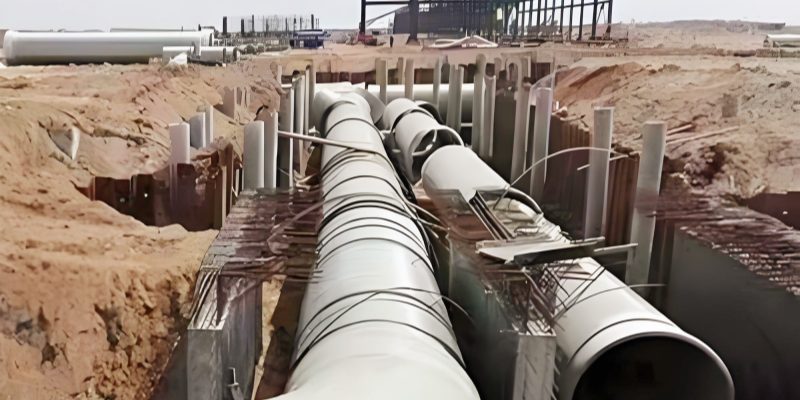
FRP Pipe Density and Its Impact on Performance
The density of FRP pipes is a key factor in their strength, durability, and performance in various industrial applications. It influences the pipe’s ability to withstand pressure, resist corrosion, and maintain structural integrity. Additionally, the FRP pipe friction factor plays a crucial role in determining the pipe’s flow characteristics and pressure drop. The density is determined by the type of fiberglass reinforcement and resin used, ensuring that the pipe meets the specific needs of industries like chemical processing, oil and gas, and water treatment.
How FRP Pipe Density Impacts Performance
The performance of FRP pipes in various industrial settings is largely determined by their density. FRP pipe density impacts several key characteristics, such as:
Weight
The overall weight of an FRP pipe is directly influenced by its density. Low-density pipes are lighter, making them easier to handle and install. This is particularly important in large-scale infrastructure projects where transportation and installation costs can significantly impact the overall budget. For instance, FRP pipes used in chemical plants or wastewater treatment facilities must balance ease of installation with the need for mechanical strength.
Structural Strength
The structural strength derived from frp pipe density allows engineers to design piping systems that can endure harsh environmental conditions, ensuring compliance with the FRP Pipe Code for safety and performance standards. The combination of fiberglass and resin results in a composite material that is corrosion-resistant, providing an advantage over traditional metal pipes, especially in corrosive environments.
Corrosion Resistance
One of the main reasons FRP pipes are chosen over traditional materials like steel or concrete is their superior resistance to corrosion. While FRP pipe density does not directly influence corrosion resistance, the composition of the pipe does. Filament wound FRP pipe, with a balanced combination of resin and fiberglass, reflected in their density, tend to offer the best protection against corrosive substances. This makes them ideal for industries exposed to harsh chemical environments.
Thermal Expansion
FRP pipes expand and contract with changes in temperature. Pipes with higher density may be more resistant to the effects of thermal expansion, maintaining their structural integrity under fluctuating temperature conditions. This is an important consideration in industries like power generation, where pipelines are frequently exposed to extreme temperatures.
Pressure Classification
The density of FRP pipes impacts their pressure classification and performance. With densities between 1.8 to 2.0 g/cm³, FRP pipes are lightweight yet strong, influencing their ability to withstand internal pressure. For high pressure fiberglass pipe, pressure classification depends on factors like wall thickness, fiber composition, and resin type. For high-pressure applications, thicker walls or added reinforcement ensure reliable performance while maintaining a balance between strength, weight, and pressure tolerance, providing corrosion-resistant pipes for demanding environments.
Materials Contributing to FRP Pipe Density
The composite materials used in FRP pipes are the primary factors influencing frp pipe density. These pipes typically consist of a matrix of glass fibers embedded in a resin, with the choice of fibers and resin impacting both the weight and density of the final product. This principle also applies to fiber glass duct board, which utilizes similar materials and construction techniques to achieve excellent insulation and durability. The combination of glass fibers and resin in both applications ensures optimal performance in various environments. The most commonly used fibers include E-glass and S-glass, each offering different density and mechanical properties.
- E-glass fibers: These are the most common glass fibers used in FRP pipes, known for their excellent insulating properties and moderate strength. Pipes reinforced with E-glass fibers tend to have a lower density compared to those made with S-glass fibers.
- S-glass fibers: Offering a higher tensile strength than E-glass, S-glass fibers result in a pipe with increased frp pipe density. This higher density contributes to superior strength and stiffness, making it ideal for applications requiring high mechanical performance.
The resin used in the composite matrix also affects the frp pipe density. Common resins include polyester, vinyl ester, and epoxy, each with distinct properties that contribute to the overall density. Polyester resins are typically used for their cost-effectiveness and balanced performance, whereas vinyl ester and epoxy resins offer enhanced chemical resistance and mechanical strength, resulting in a higher FRP pipe density. Clear epoxy resin for FRP pipe, for example, provides excellent adhesion and durability, making it an ideal choice for applications requiring superior performance and longevity.
FRP Pipe Density and Types of Glass Fibre Reinforcements
FRP pipes are highly durable and lightweight, which is partly due to the use of glass fibre reinforcements in their manufacturing process. These reinforcements help improve the strength and performance of the pipes, ensuring they meet various industrial requirements. Understanding the types of glass fibre reinforcements and their characteristics is crucial for determining the optimal FRP pipe design. The density of FRP pipes is influenced by the type of fibre reinforcement used, as well as the resin matrix.
Below is a table summarizing the different types of glass fibre reinforcements commonly used in FRP pipe manufacturing:
| Type of Glass Fibre Reinforcement | Description |
|---|---|
| Chopped Strand Mat | Made from short strands of glass fibres randomly distributed. |
| Rovings | Continuous strands of glass fibres twisted into yarns. |
| Woven Glass Fabrics | Interlaced continuous glass fibres, providing strength in multiple directions. |
| Surface Veil | A fine, non-woven layer of glass fibre that is the innermost layer, in contact with the process fluid. |
These reinforcements are typically manufactured from glass or synthetic fibres such as polyester. The surface veil is generally used as the innermost layer, offering protection to the process fluid and enhancing the pipe’s longevity. Understanding the types and densities of these reinforcements can guide the selection of the right materials for specific applications.
Calculating FRP Pipe Density
The frp pipe density can be calculated using a combination of the densities of the individual materials that make up the composite structure. The general formula for calculating the density of a composite material like an FRP pipe is:
Density (ρ) = (ρ_f * V_f) + (ρ_m * V_m)
Where:
- ρ_f is the density of the fibers,
- V_f is the volume fraction of the fibers,
- ρ_m is the density of the matrix (resin),
- V_m is the volume fraction of the matrix.
The total density of the FRP pipe is influenced by the proportion of fibers and resin in the material. Higher fiber content generally results in a higher frp pipe density and improved mechanical properties, but this must be balanced against the flexibility and ease of handling required for the application.
For practical purposes, standard FRP pipes typically have densities ranging from 1,500 kg/m³ to 2,000 kg/m³, depending on the combination of fibers and resin used. GangLong Fiberglass offers a wide range of FRP pipes with varying densities tailored to specific industrial needs.
How to Optimize FRP Pipe Density for Your Project
When selecting an FRP pipe for a project, it’s important to choose one with the appropriate frp pipe density for the intended application. Too high a density can result in unnecessarily heavy pipes that are difficult to handle, while too low a density might compromise the structural integrity of the system.
- Understanding your project’s pressure requirements: The operating pressure of the system is a primary factor in determining the required frp pipe density. Higher pressure systems require pipes with a higher density to ensure they can withstand the internal forces without failure.
- Environmental factors: Environmental conditions, including exposure to chemicals, UV radiation, and temperature extremes, play a significant role in deciding the optimal frp pipe density. Pipes used in outdoor or high-temperature environments may need a higher density to resist the stresses caused by expansion, contraction, and chemical reactions.
- Installation and handling: The weight of the FRP pipes, which is directly related to their density, can affect how easy they are to install. Lightweight pipes with lower density are easier to transport and install but may require additional support structures, especially in high-pressure applications.
FRP pipe roughness factor table for improved flow analysis
FAQs about FRP Pipe Density
Fiberglass-reinforced plastic (FRP) typically weighs between 94 and 125 pounds per cubic foot, depending on the specific resin and glass fiber composition used. This weight translates to approximately 1.5 to 2.0 grams per cubic centimeter (g/cm³). The exact weight per cubic foot of FRP can vary based on the type of resin used, the proportion of fiberglass reinforcement, and any additional additives incorporated during manufacturing. Engineers and designers often rely on this information to calculate the total weight of structures or components made from FRP, ensuring they meet specific load-bearing or structural requirements.
FRP’s relatively low weight per cubic foot is a major advantage in many industries, where reducing weight can lead to cost savings in transportation, easier handling during installation, and improved overall efficiency. Despite its lightweight properties, FRP maintains a high strength-to-weight ratio, making it an ideal choice for applications where both strength and weight reduction are critical factors, such as in the construction of pipes, tanks, and structural panels used in various industrial and commercial projects.
FRP, or fiberglass-reinforced plastic, is known for being a lightweight yet strong material, which makes it ideal for a variety of applications, from construction to transportation. The weight of FRP depends on the specific formulation and the amount of fiberglass reinforcement used. On average, FRP weighs between 94 to 125 pounds per cubic foot (1.5 to 2.0 grams per cubic centimeter). This weight range makes FRP significantly lighter than traditional materials such as steel or concrete, which can weigh several times more for the same volume.
The lightweight nature of FRP offers several advantages, including easier handling, reduced transportation costs, and lower installation efforts compared to heavier materials. Despite its relatively low weight, FRP maintains excellent strength and durability, making it suitable for use in high-performance applications. The balance between weight and strength is one of the primary reasons why FRP is preferred in industries that require materials to be both strong and lightweight, such as aerospace, automotive, and infrastructure projects.
The density of fiberglass-reinforced plastic (FRP) can vary depending on the specific type of resin and the amount of glass fiber reinforcement used in its composition. On average, the density of FRP typically ranges between 1.5 to 2.0 grams per cubic centimeter (g/cm³), or about 94 to 125 pounds per cubic foot. The variation in density is due to the differences in the materials used during the manufacturing process, including the ratio of fiberglass to resin. The more fiberglass present, the higher the density of the material. Understanding the density of FRP is important for various applications, such as construction, automotive, and industrial uses, as it helps determine the material’s weight, strength, and suitability for different environments. The density also plays a role in the mechanical properties of FRP, including its stiffness and resistance to impact. Engineers use this information when designing systems that require lightweight yet strong materials.
To calculate the weight of an FRP pipe, you need to know its dimensions (length, outer diameter, and inner diameter) and the material’s density. First, determine the volume of the pipe by considering its hollow structure. The volume depends on the outer and inner diameters and the length of the pipe. After calculating the volume, multiply it by the density of the fiberglass-reinforced plastic material, which typically ranges from 1500 to 2000 kg/m³. The result will give you the weight of the pipe. Manufacturers often provide the weight per meter for specific pipe types, which simplifies the calculation process.
No, fiberglass is not heavier than steel. In fact, fiberglass is significantly lighter than steel. Steel has a density of approximately 7.85 grams per cubic centimeter (g/cm³), while fiberglass typically has a density ranging from 1.5 to 2.0 g/cm³. This makes fiberglass much less dense than steel, which results in it being lighter for the same volume. Fiberglass is commonly used when reducing weight is essential, as it provides a good balance of strength and lightweight properties. Steel, however, is heavier but offers superior tensile strength and is often used in applications where strength and durability are more critical than weight.
The density of Carbon Fiber Reinforced Polymer (CFRP) typically ranges from 1.5 to 2.0 g/cm³, similar to fiberglass but generally lighter than steel. CFRP is composed of carbon fibers embedded in a polymer matrix (usually epoxy), which gives it an excellent strength-to-weight ratio. This makes CFRP a popular material in industries such as aerospace, automotive, and sports equipment, where high strength and low weight are critical. While its density is comparable to fiberglass, CFRP is stronger, stiffer, and more resistant to fatigue, making it an ideal choice for applications requiring both strength and lightweight properties.

As the editor of GangLong Fiberglass, I have years of experience and in-depth research, focusing on cable tray products, fiberglass solutions, and grille systems. I incorporate years of industry insights and practical experience into every content, committed to promoting the progress of the industry. At GangLong Fiberglass, my commitment is reflected in every product, from innovative cable trays to durable fiberglass solutions and sturdy grille systems. As an authoritative voice in the industry, my goal is to provide valuable information to professionals and businesses and promote forward-looking solutions.


